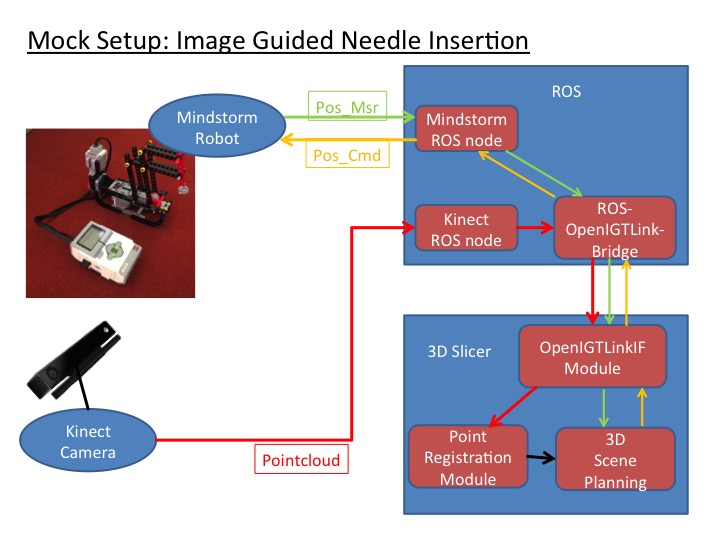Difference between revisions of "2017 Winter Project Week/ROS Surface Scan"
From NAMIC Wiki
| (One intermediate revision by the same user not shown) | |||
| Line 35: | Line 35: | ||
| | | | ||
<!-- Progress and Next steps bullet points (fill out at the end of project week) --> | <!-- Progress and Next steps bullet points (fill out at the end of project week) --> | ||
| − | * | + | * New 3 DOF needle placement robot with remote-center-of-motion (RCM) has been developed |
| + | * New ROS-IGTL-Bridge has been installed in Lego Mindstorms EV3 | ||
| + | * "Patient"-to-tracker (Kinect) registration based on surface matching | ||
| + | * Point-based device-to-tracker registration | ||
| + | [[Image:2017WinterProjectWeekROS_Architecture.jpg]] | ||
|} | |} | ||
==Background and References== | ==Background and References== | ||
<!-- Use this space for information that may help people better understand your project, like links to papers, source code, or data --> | <!-- Use this space for information that may help people better understand your project, like links to papers, source code, or data --> | ||
Latest revision as of 15:34, 13 January 2017
Home < 2017 Winter Project Week < ROS Surface ScanKey Investigators
- Tobias Frank (Institute of Mechatronic Systems, Leibniz University of Hannover, Germany)
- Junichi Tokuda (SPL, Boston)
- Longquan Chen (SPL, Boston)
Project Description
| Objective | Approach and Plan | Progress and Next Steps |
|---|---|---|
|
|
|

